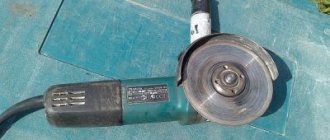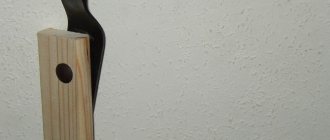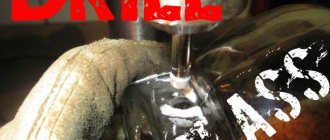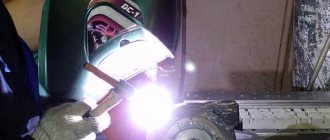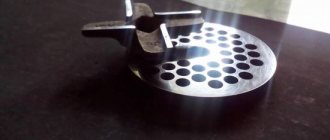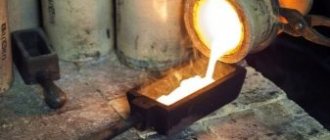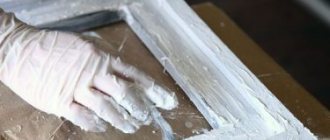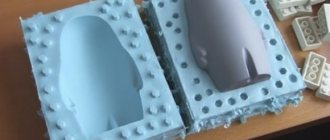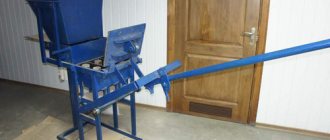A blowtorch is a necessary tool when working with metal. A blowtorch will help resurrect a household appliance, telephone, or electronic device. The device solders metal parts and quickly removes paint and varnish coatings from a metal surface. A blowtorch can only be used in working condition.
Do not forget that the tool is connected to the electrical network. A defect in functionality can cost the master his health. Experts tell us how to repair blowtorch malfunctions with your own hands.
The most common malfunctions and causes of failure
The most common malfunctions of a blowtorch are as follows:
- the pressure required for normal operation is absent or rapidly decreasing in the housing;
- there is no flame due to the fact that the fuel stream from the injector does not meet the required parameters;
- fuel leaks through joints and seals;
- Instead of spraying, a stream flows out of the nozzle.
Some problems can be fixed if you have the necessary tools at hand. Typically, repair work consists of cleaning individual components.
Sometimes the breakdown is so serious that it is impossible to repair the tool without the spare parts used for the blowtorch. Fortunately, you can find many repair kits in hardware stores and on specialized websites on the Internet.
The reason for the lack of pressure in the lamp may be a faulty pump. It can be replaced or repaired with your own hands. A rapid decrease in pressure occurs if the threaded connections, service and safety valves are leaking.
The problem is solved by replacing the gaskets, cleaning the surfaces of the covers and valves in contact with the body.
There is no burner flame if the fuel stream coming from the nozzle is very weak or intermittent. This can occur due to contaminants that have entered the lamp with low-quality fuel. In this case, it is necessary to clean all the channels and the jet with suitable tools and rinse the lamp with clean gasoline.
Fuel leaks through the seals of the control valve if the stuffing box, which is the sealing gasket between the body and the valve, has lost its properties. Repairing the malfunction involves disassembling the tap and replacing the stuffing box.
If fuel streams out of the burner, the reason is most likely that the nozzle opening is not correct. Before this, you need to make sure that the instrument is really warmed up. If problems of this kind recur during warm-up, the burner nozzle must be replaced.
What's inside?
If we take on the repair of the “fire-breathing dragon,” we should figure out what’s inside it:
- Fuel tank 2 is needed not only for fuel, but also for compressed air above it. The container has a filling hole with a lid 11.
- The fuel is supplied to the mixing pipe 7 through the mixer channel 5, and the flame intensity is adjusted using valve 10.
- Fuel vapor is supplied through nozzle 8.
- Pump 12 allows you to create working pressure in the container. It makes it possible to increase blood pressure.
Essential repair tool
The following tools may be required for repairs:
- adjustable wrench;
- screwdrivers;
- pliers;
- small brush;
- sewing needle or thin steel wire.
Materials you may need include stuffing box, steel washers and nuts, gasoline or kerosene.
You will need to disassemble the tool and its components with a wrench and screwdrivers to provide access to the faulty part. You will need pliers if you have to hold the needle to clean the nozzle hole without disassembling the burner. In addition, it is convenient to use pliers to hold any screws from turning during assembly and disassembly. A brush is necessary to wash away contaminants that have entered the body and burner. It is advisable that the brush be long with hard natural bristles.
Pump repair
The blowtorch pump consists of a piston enclosed in a metal housing and a spool, which is installed at the end of the piston tube and operates on the principle of a check valve. It lets air into the body and does not let it back out.
At the end of the piston there is a leather cuff that pushes air when moving inside the lamp, and folds up to let air through when moving in the opposite direction.
This piece is simply a circle of leather sandwiched between two steel washers of different diameters. The upper washer is almost equal in diameter to the diameter of the cylinder, and the lower one is several millimeters smaller. Thanks to this, the cuff is able to pump air, folding only in one direction when necessary. To increase the service life of the cuff from repair to repair, it must be lubricated occasionally with thick lubricant.
Most often, the spool or cuff is faulty. Repairing a blowtorch pump will involve replacing them with serviceable ones. The best option for repairs would be to take working spare parts from a non-working old blowtorch, if possible. If you cannot find them, you will have to buy these parts.
The cuff, however, can be cut from a suitable piece of leather or from any suitable cuff for another pump.
A little about making leather cuffs for Primus stoves
Posted by Manuel · 04/10/2016 08:32
4,634 views
Often in old Primus stoves, due to their venerable age, the leather pump cuff is one of the parts susceptible to destruction.
A few words about how to make a new knee cuff. Dimensions are given for the Tula Primus pump with an internal sleeve diameter of 18 mm.
1. Cut out a circle the size of a two-ruble coin from leatherette, or preferably from genuine leather 2 mm thick. The PVC coating must be removed with sandpaper.
2. Use a punch to punch a hole with a diameter of 5 mm in the center.
3. We clamp the resulting “washer” on the M5 pin, with the “shaggy” side inside the molded cuff. It is better to take an M5 washer with a “shaggy” side with a diameter of 9.10 mm.
4. Dip the pin together with the workpiece into melted paraffin and leave it there for 15-20 seconds for impregnation. You should not wait longer than this time, because the leatherette blank becomes rigid and inconvenient for further molding.
5. First molding on a die with an internal diameter of 20 mm.
6. Second molding on a die from a tube with an internal diameter of 17.5 mm. It is necessary to keep the workpiece in the tube until it cools completely. If there is no tube, you can use the pump sleeve as a mandrel, after removing the burrs.
7. Holding the workpiece by the pin, use a sharp knife to trim the uneven edges along the cut of the tube.
9. Using a punch with a diameter of 8.9 mm, punch a hole in the workpiece.
10. That's it! The cuff is ready!
The pump is assembled in the following order:
1. The handle is screwed onto the rod and the pump cover is put on.
2. At the place where the transition from a diameter of 6 mm to a diameter of 5 mm begins, a little cotton soaked in oil is wound. thread This is necessary to prevent air leakage.
3. The pump washer is put on; the side facing the cuff should have a smooth, burr-free surface. This is also necessary to prevent air leakage.
4. Next, a piece of brass tube is put on.
5. A cuff is placed on the brass tube. The cuff should sit loosely on the brass tube, the gap is 0.3. 0.5 mm. This is necessary for active filling of the sleeve with air during the reverse stroke of the rod.
6. An M5 nut with “flat spots” is screwed onto the thread of the rod.
7. The nut with “balts” is locked with a regular nut.
8. The cuff and rod are lubricated with semi-liquid oil. I used a compressor.
9. The assembled structure is inserted into a lightly lubricated sleeve. A test pumping is carried out.
Cleaning the jet
The jet, as already mentioned above, can either become clogged with dirt from low-quality fuel, or carbon deposits from its combustion. In both cases, cleaning can correct the situation. If you need to use the lamp very urgently, you can try to clean the nozzle with a needle held in pliers. But in this case, contaminants will get inside. Immediately after completing the work, it is necessary to disassemble and clean the entire blowtorch.
If there is no hurry, it is better to unscrew the jet from the burner and try to blow it with compressed air from a compressor or from a special can. Only if this method does not produce results, you can carefully use mechanical cleaning during repairs.
After cleaning the nozzle, it must be washed in gasoline and dried before installing it in the burner.
Handling old lamps
Old blowtorches that have not been used for a long time should first be inspected from the outside. During inspection, you need to check how easily all the valves and the tank lid open. The adjustment valve should turn easily.
After this, you need to check the housing for leaks. To do this, use a pump to pump air into a lamp that is not filled with fuel. Then, using a brush, apply a thick soap solution to all threaded connections and the faucet. You need to check it closed and open.
If all connections are tight and the pump is properly creating pressure in the housing, the tap performs its functions by opening and closing the burner, the lamp can be refilled and started.
A blowtorch is a necessary tool when working with metal. A blowtorch will help resurrect a household appliance, telephone, or electronic device. The device solders metal parts and quickly removes paint and varnish coatings from a metal surface. A blowtorch can only be used in working condition.
Do not forget that the tool is connected to the electrical network. A defect in functionality can cost the master his health. Experts tell us how to repair blowtorch malfunctions with your own hands.
Causes of blowtorch failures
Common causes of blowtorch failures include the following:
- Incorrect operation.
- Tool overheating.
- The device, which has not yet cooled down, is also connected to the electrical network, is filled with a fuel mixture or the tank lid is left open.
- There is no tightness of valves and joints of pump parts.
But even if you use a blowtorch correctly, this does not guarantee that the tool will not be damaged. Knowing the weak points of the product, you can repair the blowtorch yourself. Without determining the cause, there is no point in carrying out repair work.
Don't forget about safety
- It's time to remember about safety! I can’t count how many fires the blowtorch has caused. Let's not “multiply the exploits” of past generations and act correctly:
- if you have to work in a room with walls or floors made of flammable materials, then you will have to use metal or asbestos sheets;
- the gasoline canister should be placed so far away that an open flame does not touch it under any circumstances;
- Yes, we all spill gasoline when refueling a lamp, you will have to collect it with sand or rags and take it further from the place of work;
- no twisting of electrical wires nearby or any sparking tools with brushes;
- You are not supposed to use a blowtorch in the wind, since both gasoline and flames can fly away anywhere.
How to repair a pump in a blowtorch
A malfunction of the pump in the instrument is indicated by hissing and other sounds of unknown origin. Don't put off repairs too long. Turn off the device by removing the socket. Next, proceed to restore the fuel supply process. For repair work, a regular set of household tools will be useful.
Step-by-step instructions for pump repair consist of the following steps:
- Unscrew the plug located on the cover.
- Remove the pump from the cylinder.
- Armed with a screwdriver, remove the spool located on the valve.
- Clean the component from dirt and build-up.
- Replace the old spring with a new one.
- Decide on the connection points between the pump part and the casing. Lubricate them with an even layer of engine oil.
- Reassemble the soldering tool in the reverse order of disassembling the lamp.
If there are problems with the supply of fuel and air mass
In this case, prepare a straight-head screwdriver, pliers, a needle and thin wire. A fuel supply problem is detected by the appearance of foam and its seepage through the base of the nozzle. Most likely the jet is clogged.
Repair work involves the following sequence of manipulations:
- If there is a visible small gap, carefully insert the needle into the calibration recess and clean the fuel tube with it.
- If a positive result is not expected, the nozzle is removed.
- The wire is placed in the hole of the fuel pipe.
- Next, unscrew the valve.
- Pour gasoline into the channel. Perform the manipulation carefully and slowly.
- Assemble the structure into a single whole, put the jet in place.
- If flames appear from under the stem, extinguish the fire.
- Remove the valve handle and replace the worn stuffing box in the intake needle with a new one.
If the air pressure on the inner surface of the chamber in a blowtorch is broken, repairs are carried out based on the channels that function to supply an air stream. The technician should remove carbon deposits by filling the channels with trichlorethylene. Afterwards, to wash away the rust formed on the walls, rinse the channels with acid and dry by blowing with compressed air.
The work is carried out wearing special gloves. It is also better to protect your eyes with glasses.
You can watch video instructions on how to repair a blowtorch with your own hands: How to avoid regular repairs
In order to resort to repairing a blowtorch infrequently, you must follow the instructions for using the unit. We are used to turning on a blowtorch indoors. But then you should remember that the tool should be in working condition for no longer than 15-30 minutes. After use, the room is thoroughly ventilated.
You can extend the life of your equipment by applying the following rules:
- Before turning on the device, fill it with fuel. Refueling is carried out by filling the tank to ¾ of the total volume. Emptiness is necessary to create pressure.
- For pressure to be present, the pump also needs to make 10 gentle pumping motions.
- When pouring fuel into the burner tray, use an alcohol composition. Thanks to this technique, a minimal amount of soot is formed. Correct operation of the unit is possible if the fuel is ignited. There should be no drafts around.
- When fuel combustion is complete, open the needle valve. The fuel is now in a gaseous state. If drops are present, continue heating. If the burner does not heat up for a long time, place the lamp near a metal panel. Maintain a distance of 2-3 cm from the sheet to the nozzle.
- If the combustion goes out, clean the nozzle with a special needle.
- You can extinguish the torch of the instrument by screwing the valve and lowering the needle.
- Do not turn on a blowtorch near the burner. This provokes heating of the cylinder and fuel beyond 50 degrees.
- The fuel that is poured into the equipment must meet the specifications established by the blowtorch manufacturer.
A blowtorch is a heating device with which a high temperature is obtained by flaming combustion of certain initial flammable substances. Such substances used during operation of the device are:
- petrol;
- alcohol;
- kerosene and some others.
Design of a gasoline blowtorch
In the design of a gasoline blowtorch, there are two main structural parts - a tank for storing fuel reserves and a burner.
An ejector is a device in which kinetic energy is transferred from one medium moving at a higher speed to another.
The burner is called an ejector. The ejector has a design that promotes the flow of air and decaying combustion products during the combustion process. The operating principle of this device is based on creating thrust due to fuel combustion.
A supply of fuel is poured into the tank, after which it is closed with a tight lid with a seal. The lid with a seal prevents fuel leakage during storage of the device, as well as during its operation. The tank for storing a supply of gasoline is equipped with a pumping device that allows air to be pumped into the tank to create excess pressure in it. Excess pressure contributes to the transportation of gasoline from the tank to the burner during operation of the device.
A typical device contains the following structural elements:
- fuel tank;
- handle for holding the device during operation;
- hermetically sealed fuel filler neck;
- pump with valve - to create excess pressure in the tank;
- siphon tube providing fuel supply to the evaporator;
- a needle valve used to regulate the fuel supply;
- evaporator;
- nozzle;
- ejector;
- nozzle cleaning device.
The fuel filled into the device tank is a consumable item. The smokiness of the flame and the clogging of the nozzle depend on the quality of the fuel used; in addition, the degree of explosion hazard that occurs during the use of the device depends on the quality of the fuel. For normal operation of gasoline devices, it is necessary to use special gasoline or gasoline with an octane rating of at least 80. If low-quality fuel is used, the device may require repairs.
Device
A gasoline blowtorch consists of the following components:
- A burner designed to use a specific type of fuel. For example, a gas blowtorch will have a different burner design than a device using liquid fuel.
- Fuel tank.
- Systems for supplying the combustible mixture to the burner.
- Manual fuel supercharger (pump).
- Shut-off and control device.
- Check valve (not available in all designs).
- Holding handle.
Technical characteristics of a gasoline-powered blowtorch
The design, configuration and weight of the blowtorch depends on the model.
A blowtorch is a useful tool in the household. Tool models produced in Russia have different technical parameters and fuel consumption. There are several parameters that characterize these devices. In order to choose the right tool model, you need to familiarize yourself with the technical parameters of the products. The common parameters for all devices are the following:
- fuel tank capacity;
- established indicator of maximum filling of the fuel tank;
- maximum permissible pressure during operation;
- fuel consumption;
- tank diameter;
- weight of the device without fuel;
- availability of manufacturer's warranties;
- device service life.
The technical characteristics of the device determine the popularity of blowtorch models. The most popular devices are those with a tank volume of about 2 liters. These models have an established maximum filling rate of around 1.5-1.8 liters, the maximum permissible pressure during operation is 0.3 MPa. The fuel consumption of most of the most common models is 1.2 liters per hour. The mass of such blowtorches in dry, unfilled form is about 2 kilograms. Most manufacturers of these products provide a one-year warranty on their products. The service life of most products manufactured by Russian manufacturers is 5 years.
The principle of operation of a blowtorch
The blowtorch can run on kerosene and gasoline.
After refueling the device, air is pumped into the tank using a pump, which creates increased pressure inside the fuel cylinder. Excessive air pressure forces fuel into the burner, where it burns and forms a flame. To ignite the burner and ensure stable operation, it must be preheated to a certain level. To carry out heating, a fuel cup is used, which is mounted under the burner. The capacity of one cup is usually enough to heat the burner to the desired temperature.
When a certain burner heating temperature is reached, the fuel supplied from the reservoir to the burner evaporates in the evaporator. Gaseous fuel enters the combustion area and forms a flame through a special nozzle. During the combustion of evaporated fuel, oxygen is sucked into the combustion area and the process is maintained.
During the process of heating the burner, air is not pumped into the tank for safety reasons, and the shut-off valve must be closed at this moment. The shut-off valve opens only after the burner and evaporator have warmed up. After opening the shut-off valve, the flame strength is adjusted. After finishing work with the device, turn it off by screwing in the shut-off valve.
Best models
A blowtorch is a primitive mechanism that does not require the use of high technology to manufacture.
However, there are many unscrupulous manufacturers who make low-quality blowtorches. Not only do they quickly become unusable, but they can also pose a danger to the worker - due to defects and incorrect tolerances, they become unsafe from the factory. We have compiled a rating of the best blowtorches so that people can choose a quality tool. When compiling the list, we were guided by people's reviews of a specific lamp model, its characteristics and cost. The rating includes lamps of different sizes, which are designed to operate on different fuels. Thus, each reader can choose a model suitable for their tasks.
Caliber LP-1.5
Inexpensive gasoline lamp with a volume of one and a half liters.
The flame level can be adjusted. It is impossible to say anything special about this lamp - the standard design makes the lamp both simple and reliable. The materials used are of good quality, so this lamp can last for years with active use. Separately, it is worth noting the fact that the main parts are chrome-plated, which means they are not subject to corrosion.
Advantages:
- cheap;
- practical.
Flaws:
fuel consumption.
| Fuel | Petrol |
| Volume | 1.5 liters |
| Fuel consumption | 1100 g/hour |
| Price | 800 rubles |
BISON "PROFESSIONAL"
A blowtorch with an ejector that runs on gasoline. It is distinguished by good performance and high quality materials. In addition, this is one of the few lamps that can run on A92/A95 gasoline.
The lamp can be used indoors because it emits less harmful fumes during operation (but good ventilation is required in any case). There are two versions of the lamp - with a tank of one and a half and two liters, respectively.
Advantages:
- quality materials;
- works with any gasoline;
- emits less odor during operation than other lamps.
Flaws:
price.
| Fuel | Petrol |
| Volume | 1.5/2 liters |
| Fuel consumption | 1100 g/hour |
| Price | 1500 - 2000 rubles |
STAYER MASTER 55590
Gas blowtorch at a low price. The main advantages of the lamp are efficiency and safety. Gas consumption is minimal, and such a lamp emits even more energy than a gasoline lamp.
Unlike lamps using other types of fuel, gas lamps are less likely to explode or ignite due to careless handling and violation of safety regulations.
This lamp is a good choice. Its only drawback is that you have to look for fuel (a suitable replacement cylinder).
Advantages:
- minimum fuel consumption;
- flame power adjustment;
- safety.
Flaws:
fuel is harder to find.
| Fuel | Gas |
| Volume | 190 grams |
| Fuel consumption | Not declared by the manufacturer |
| Price | 1300 rubles |
Leopard MIR-91451
Kerosene blowtorch with a volume of one and a half liters. Equipped with a nozzle with a preheating chamber, thanks to which the flame remains stable at all times. This ensures uniform and constant heating of the material with which the lamp works.
This lamp is suitable for those for whom kerosene is the preferred type of fuel (due to its greater environmental friendliness or availability in specific conditions).
Advantages:
- quality of execution;
- preheating chamber.
Flaws:
price.
| Fuel | Kerosene |
| Volume | 1.5 liters |
| Fuel consumption | Not declared by the manufacturer |
| Price | 1700 rubles |
Product Application Areas
About ten years ago, this device was used in every case where it was necessary to heat surfaces or metal. This product was very often used in production, since most often there was no replacement for it. A blowtorch is used in cases where heating is required in the absence of alternative sources of thermal energy or in the absence of the possibility of using modern technology.
A blowtorch is used for: heating a soldering iron tip, welding metal parts up to 1000 degrees, melting metal up to 900 degrees, for removing varnish, and when heating frozen pipes.
Most often this device is used in the following situations:
- if it is not possible to use an electric soldering iron during work, the device allows you to perfectly heat up both the solder and the soldering iron tip;
- if it is necessary to weld metal workpieces made of metals whose melting point is below 1000 degrees;
- if necessary, carry out the melting of metal having a melting point below 900 degrees;
- the tool is used when it becomes necessary to remove the varnish coating on the surface of objects made of metal;
- when heating and thawing frozen water in water supply and sewerage pipes;
- if it is necessary to carry out the operation of heating a car engine.
In some cases, a blowtorch is used to loosen bolts and other connections when disassembling them, if these connections are rusty. In addition, this device is used in agriculture during the slaughter of livestock for tarring animal skins.
Blowtorch Operating Instructions
Before using the device, you must read the instructions on how to use a blowtorch. You can use this device only after you have read the instructions.
The device can only be used outdoors. If there is an urgent need to use the device in a closed space, it can be used for a short time, followed by high-quality ventilation.
When using the device, you must strictly follow the operating instructions.
Failure to follow safety precautions when working with a blowtorch can lead to its explosion and other dire consequences.
- Before starting work, the device is refueled if necessary. The tank should be filled to three-quarters of its volume. An empty volume is required to create pressure during operation.
- Excessive pressure must be created in the tank using a pressure pump built into the device. To create pressure, you will need to perform up to 10 gentle pumping motions.
- After obtaining increased pressure, you need to pour fuel into the burner bath. It is best to use alcohol for this purpose, since this fuel does not produce a large amount of soot. The fuel poured into the bath is ignited to ensure initial heating of the burner evaporator. During the combustion of fuel in the bath, it is necessary to protect the device from drafts.
- After combustion of the fuel poured into the bath stops, the needle valve is opened. The fuel coming from the evaporator must be gaseous - if droplets are detected in the fuel flow, the procedure for heating the burner evaporator should be repeated.
- After receiving a jet of gaseous fuel, it is ignited. If necessary, the volume of incoming fuel can be adjusted using a needle valve. To speed up the process of complete heating of the burner, you can place the lamp against a metal sheet, and the distance from the sheet to the burner nozzle should be 2-3 cm.
- When carrying out work, monitor the state of the torch - you can increase or decrease it using a needle shut-off valve.
- If there is instability in the operation of the burner or combustion damping occurs, it is necessary to clean the nozzle with a needle specially designed for this purpose.
- After completion of work, the device torch is extinguished. Extinguishing the torch of the device is carried out by screwing the valve and lowering the needle. After the lamp has cooled, the air is bled from the tank.
When working with the tool, precautions should be taken.
GENERAL OCCUPATIONAL SAFETY REQUIREMENTS
1.1. Persons over 18 years of age who have no medical contraindications and who have undergone introductory and initial workplace safety training, fire safety training, training in safe labor methods and techniques, on-the-job training and testing of knowledge of the requirements are allowed to independently operate blowtorches. labor protection. 1.2. Personnel involved in the operation of blowtorches must undergo: - repeated instructions on labor protection in the workplace at least every three months; — unscheduled briefing: when changing the technological process or labor safety rules, replacing or upgrading production equipment, fixtures and tools, changing working conditions and organization, violating labor safety instructions, breaks in work for more than 60 calendar days (for work which are subject to increased security requirements - 30 calendar days); — periodic medical examination in accordance with the current legislation of the Russian Federation; — regular testing of knowledge of labor protection requirements at least once a year. 1.3. When operating blowtorches, personnel are obliged to: - comply with the internal labor regulations established at the enterprise; — comply with safety rules when operating pipelines; — comply with the requirements of this instruction, instructions on fire safety measures; — comply with the requirements for the operation of equipment; — use as intended and treat the issued personal protective equipment with care; — be able to use personal protective equipment, be able to provide first aid to victims of suffocation, carbon monoxide poisoning, burns, and electric shock. 1.4. Personnel operating blowtorches must: - be able to provide first aid to a victim in an accident; — know the location of first aid facilities, primary fire extinguishing equipment, main and emergency exits, evacuation routes in the event of an accident or fire; - perform only the assigned work and do not transfer it to others without the permission of the foreman or workshop manager; — while working, be attentive, do not be distracted or distract others, do not allow persons unrelated to work to enter the workplace; - keep the workplace clean and tidy. 1.5. Personnel must know and observe the rules of personal hygiene. Eat, smoke, and rest only in specially designated rooms and places. Drink water only from specially designed installations. 1.6. In accordance with the “Standard industry standards for the free provision of special clothing, special shoes and other personal protective equipment to workers and employees,” when operating blowtorches, personnel are required to wear a cotton suit (wearing period 12 months) and combined mittens (wearing period 2 months), a waterproof raincoat, Goggles, rubber boots, in winter additionally: jacket with insulating lining, trousers with insulating lining. 1.7. The main dangerous and harmful production factors under certain circumstances may be: - increased noise; — poisoning by products of incomplete combustion; - danger of electric shock. 1.8. Each blowtorch must have a passport indicating the results of the factory hydraulic test and the permissible operating pressure. Lamps must be equipped with spring-loaded safety valves adjusted to the specified pressure. 1.9. All blowtorches must be registered and have an inventory number. 1.10. For failure to comply with the safety requirements set out in these instructions, the worker is liable in accordance with the current legislation of the Russian Federation.
Precautions required when working with a blowtorch
When working with a lamp, strict adherence to safety regulations is required. The fact is that violations of the rules for working with this device can provoke an explosion of the device. A blowtorch is a fire hazard. The fuel storage tank is located very close to the open flame of the torch.
When operating the device, the following rules must be observed:
- It is prohibited to operate the tool if fuel leaks or fuel vapors are detected in the structure;
- It is prohibited to use fuel during operation of a blowtorch that does not comply with the manufacturer’s recommendations;
- It is prohibited to operate the device for a long time, since the close location of the burner provokes heating of the fuel cylinder above 50 degrees Celsius;
- It is prohibited to use the device if a malfunction of the safety valve is detected;
- Do not fill the tank with fuel while the burner is burning;
- It is not recommended to use the device in enclosed spaces.
In addition, it should be said that failure to comply with almost any of the safety rules when working with a blowtorch can provoke an explosion and unpleasant consequences.
Following simple safety rules allows you to achieve the most efficient operation of the device during operation.
Safety precautions [ edit | edit code ]
In addition to the obvious fire hazard, a blowtorch is a potentially explosive device, since the tank contains a mixture of fuel vapor and air under high pressure, and the tank heats up during operation. Therefore, when using a blowtorch, strict adherence to safety rules is required, namely:
- do not allow the tank to heat up to a temperature above 50 °C;
- do not open the tank lid and do not refill while the lamp is running or has not yet cooled down;
- do not create excess pressure in the lamp, do not use gasoline in a lamp intended for the use of kerosene;
- monitor the tightness of the pump valves and connections;
- During transportation and storage, make sure that there is no excess pressure and no fuel residues in the tank.
The most common cause of a blowtorch explosion is the opening of the hot torch reservoir lid. In this case, gasoline vapors come into contact with a burner heated to 500-600 °C and ignite, causing an explosion of the steam-air mixture in and around the tank. You also need to take into account that the old lamps used kerosene; when filling with gasoline and subsequent use, the tank burst under pressure. Burns in this case are almost inevitable, since they usually occur when trying to “pump up”
It is necessary to understand that when igniting a gasoline lamp, the evaporator is filled with gasoline, and if at this stage the fuel supply valve is closed, then the gasoline remaining in the evaporator will continue to leave the evaporator through the nozzle in the form of a liquid, or in the case of greater heating, in the form of a gas-liquid or gas jet .
In addition, when working indoors, it is necessary to have sufficient ventilation to remove strong-smelling, toxic and carcinogenic combustion products.
A blowtorch, in most cases, can be replaced with a safer gas burner (the gas in the cylinder does not mix with air).
If there is a source of electrical energy of sufficient power at the work site, the blowtorch can be replaced with a technical hair dryer, which does not use flammable materials and is safer.
The design of a gasoline blowtorch and its instructions must be studied very carefully, since this type of device is a fire hazard. Often during repairs or installation of any structure it is necessary to heat the surfaces for better assembly.
Blowtorch device.
The use of various portable gas burners or electric hair dryers is not widely used in the household. These industrial devices are difficult to use, so a blowtorch is used to quickly heat them up. But numerous questions about operation often come to specialists. This is due, first of all, to the fact that people are a little lazy to read the instructions to the end. The descriptions and instructions are quite boring and complicated. Therefore, it is necessary to describe the operation of the lamp in a simpler way.
Read about sawmills at home here.

